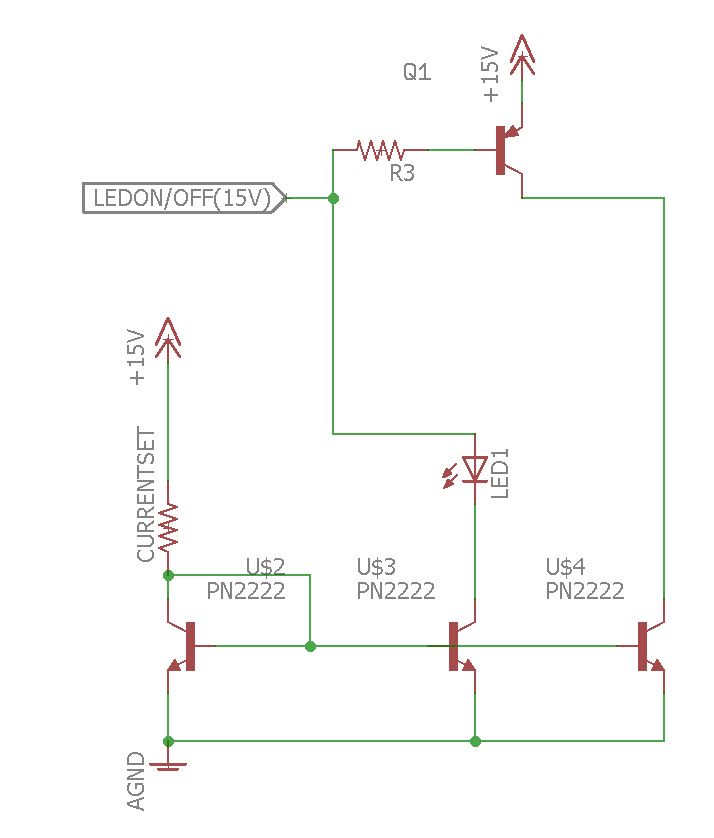Jetlagged, in a hotel room, I started thinking about the pain and strife of LED VU Meters, and how they tend to modulate noise on to power and ground lines, due to 10's of mA's being switched on and off rapidly.
I pondered what if we could keep the current constant, so that the system power and ground lines saw the same current being drawn, regardless of LED status.
I give you, dun dun duuuuh, the Rochey Constant Current LED Circuit.
A few notes:

I pondered what if we could keep the current constant, so that the system power and ground lines saw the same current being drawn, regardless of LED status.
I give you, dun dun duuuuh, the Rochey Constant Current LED Circuit.
A few notes:
- It's probably been done before.
- 15V is extreme, you could probably run the ON/OFF from a 5V supply and an inverter/not gate.
- The current set resistor sets the constant current through the LED array
- When the LED is off, the same current is driven driven through U$4
- It's massively power inefficient, but most Pro Audio gear is more concerned with low noise than power consumption
- Current Set resistor can be used once for your entire LED array, giving consistent LED brightness.






